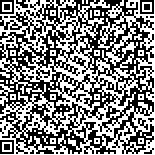| 摘要: |
| 目的 猪肉价格周期波动一直是困扰生猪产业健康发展的难题,文章研究饲料成本“保险+期货”模式稳定猪肉市场价格的效果具有重要理论和现实意义。方法 如果玉米、生猪和猪肉市场之间存在着价格波动传导机制,那么饲料成本“保险+期货”模式就可以通过稳定玉米饲料价格来缓解猪肉市场价格波动,因此应用非对称BEKK-MGARCH模型和DCC-MGARCH模型研究玉米、生猪和猪肉市场之间的价格波动传导机制和动态关联程度。结果 (1)生猪和猪肉市场对负向冲击的反应程度明显高于对正向冲击的反应程度,即存在非对称价格波动传导效应;(2)玉米(生猪)市场与猪肉市场之间存在着双向价格波动溢出效应,表明降低玉米和生猪市场价格波动水平有助于稳定猪肉价格,因此饲料成本“保险+期货”模式可以起到稳定猪肉价格的效果;(3)DCC-MGARCH模型的估计结果也支持上述结论,同时发现玉米市场政策调整和重大外界冲击会降低玉米和生猪(猪肉)市场之间的动态关联度,从而削弱饲料成本“保险+期货”模式的实施效果。结论 减少玉米市场不必要的政策干预,提升应对重大外界冲击的能力可以提高饲料成本“保险+期货”模式稳定猪肉价格的效果;缺乏风险规避工具的农产品市场可以利用关联市场上的风险规避工具,间接实现自身价格的稳定。 |
| 关键词: 猪肉价格波动 玉米价格 饲料成本 “保险+期货”模式 非对称价格波动传导 非对称BEKK-MGARCH模型 |
| DOI:10.7621/cjarrp.1005-9121.20221116 |
| 分类号:F326.3 |
| 基金项目:教育部人文社会科学青年项目“‘保险+期货’模式是猪肉市场价格波动的稳健器吗——基于非对称价格波动传导视角的研究”(20YJC790102) |
|
| EFFECT OF FEED COST "INSURANCE PLUS FUTURES" ON STABILIZING PRICE VOLATILITY OF THE PORK MARKETBASED ON THE ASYMMETRIC PRICE VOLATILITY TRANSMISSION MECHANISM |
|
Pan Fanghui, Wang Ning, Zhu Chengzi
|
|
Economics and Management College, Northeast Agricultural University, Harbin 150030, Heilongjiang, China
|
| Abstract: |
| The price volatility of the pork market has always been a big issue threatening the healthy development of the hog industry. Therefore, it is of great theoretical and practical significance to study the effect of feed cost “Insurance plus Futures” mode on stabilizing pork market price. If there were price volatility transmission mechanisms between corn, hog and pork markets, the feed cost “Insurance plus Futures” mode could be used to alleviate the price volatility of the pork market by stabilizing the corn price. In this paper, the asymmetric BEKK-MGARCH and the DCC-MGARCH models were used to study the price volatility transmission mechanisms and dynamic correlations among corn, hog and pork markets. The results were showed as follows. Firstly, the reaction of the hog and pork markets to negative shocks was obviously larger than that to positive shocks, namely the effect of asymmetric price volatility transmission exited. Secondly, there were bi-directional price volatility spillover effects between corn (hog) and pork markets, indicating that reducing price volatilities of corn and hog markets were helpful for stabilizing the pork price, so the feed cost “Insurance plus Futures” mode was effective in decreasing price volatility of the pork market. Thirdly, the estimation results of the DCC-MGARH model further proved the above conclusions, and also found that policy adjustments of the corn market and major external shocks could reduce dynamic correlations between corn and hog (pork) markets, which affected the effect of feed cost “Insurance plus Futures” mode negatively. Thus, reducing unnecessary policy interventions in the corn market and enhancing the ability to deal with large external shocks can improve the effect of feed cost “Insurance plus Futures” mode on stabilizing the pork price. The agricultural product markets can apply risk aversion tools in related markets to stabilize their own prices indirectly. |
| Key words: pork price volatility corn price feed cost “Insurance plus Futures” mode asymmetric price volatility transmission asymmetric BEKK-MGARCH |

